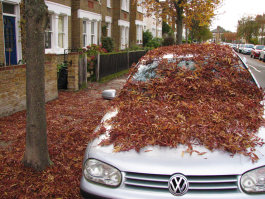
Ever wondered about the psychology behind road rage? Read on to find out more!
So what do you think of when you hear the term "road rage"? It's one of those catch phrases everyone has heard, and yet there is no common definition we can all use. Often, people use terms like "road rage" and "aggressive driving" interchangeably.
And while some might say that aggressive driving includes everything from cutting someone off on purpose to tailgating to making obscene gestures andcursing at other drivers, others might claim road rage refers only to incidents where violence erupts between drivers and passengers -- in or around cars. (There are just as many who might reverse those two definitions.) One thing is certain -- road rage is a dangerous phenomenon that can happen to any one of us, either as a perpetrator or a victim.
Driving a car is stressful -- it's inherently dangerous because even if you're the safest driver in the world, there are a lot different variables that you can't predict, like weather, traffic, accidents, and road work. And what about all those other people on the road? Some of them aren't just bad drivers, they're engaging in risky behavior. Some of them even do things specifically to make you angry or prevent you from getting to where you need to go.
That's the thought progression someone might have just before switching into road-rage mode, leading a driver to make irrational decisions very quickly. All of a sudden, you might be thinking: They need to know that what they're doing is dangerous and stupid, and you should show them. In fact, you should punish them.
There's no denying that driving can be a risky and emotional experience. For many of us, our cars are an extension of our personality, and it might be the most expensive possession we own. When we drive, we're aware that there's potential for injury and property damage. Driving might be an expression of freedom for some, but it's also an activity that tends to increase our stress levels, even if we're not aware of it at the time. Driving is also a communal activity. You might think of driving in terms of your own individual experience. But once you pull into traffic, you've joined a community of other drivers, all of whom have their own goals, fears and driving skills. Psychologists Dr. Leon James and Dr. Diane Nahl say that one factor in road rage is our tendency to concentrate on ourselves while dismissing the communal aspect of driving. It's very easy to perceive another driver's actions in terms of how it affects us, which in turn makes it easy to transition into anger [source: James, Nahl]. Once an expert witness to Congress on traffic psychology, Dr. James, known as "Dr. Driving," believes that the core cause of road rage isn't due to traffic jams or more drivers on the road -- but how our culture views aggressive driving [source: Dr. Driving.org].
In our culture, children learn that the normal rules regarding behavior and civility don't apply when driving a car. They may see their parents engage in competitive-driving behaviors, maneuvering the car with multiple lane changes or traveling at high speeds in a rush to get to a destination. Some popular films and television shows portray aggressive driving as a positive, or at the very least, an exciting activity. To complicate matters, for years pop psychologists suggested that the best way to relieve anger and stress was to vent your frustration, essentially giving into and feeding your negative emotions. However, psychological studies show that venting doesn't help relieve anger at all. In a road rage situation, venting can help escalate an incident into a violent encounter. Americans also tend to view a person who backs away from confrontation as a coward, creating a sense of pressure on a driver to not give up any ground even when no one is judging him. With that in mind, it's no surprise that violent encounters happen occasionally. Almost everyone is predisposed to engaging in irrational behavior while driving -- Dr. James even goes so far as to say that most people are emotionally impaired when they drive [source: James]. The key, psychologists say, is being aware of your emotional state and making the right choices, even when you are tempted to act out emotionally.
Read more: http://auto.howstuffworks.com/car-driving-safety/accidents-hazardous-conditions/road-rage1.htm







 General admission tickets are $15 at the door and $10 if ordered online. Some of the workshops offered are Saving Dollars with Extreme Couponer Nathan Engels, Do you have Dairy, Nut, Egg or Gluten Allergies?, Cake Decorating Taught by award-winning Executive Pastry Chef, Meghann Walsh, Set the Table with Crate & Barrel, Spice It Up – Indian Style to name a few.
General admission tickets are $15 at the door and $10 if ordered online. Some of the workshops offered are Saving Dollars with Extreme Couponer Nathan Engels, Do you have Dairy, Nut, Egg or Gluten Allergies?, Cake Decorating Taught by award-winning Executive Pastry Chef, Meghann Walsh, Set the Table with Crate & Barrel, Spice It Up – Indian Style to name a few. 
